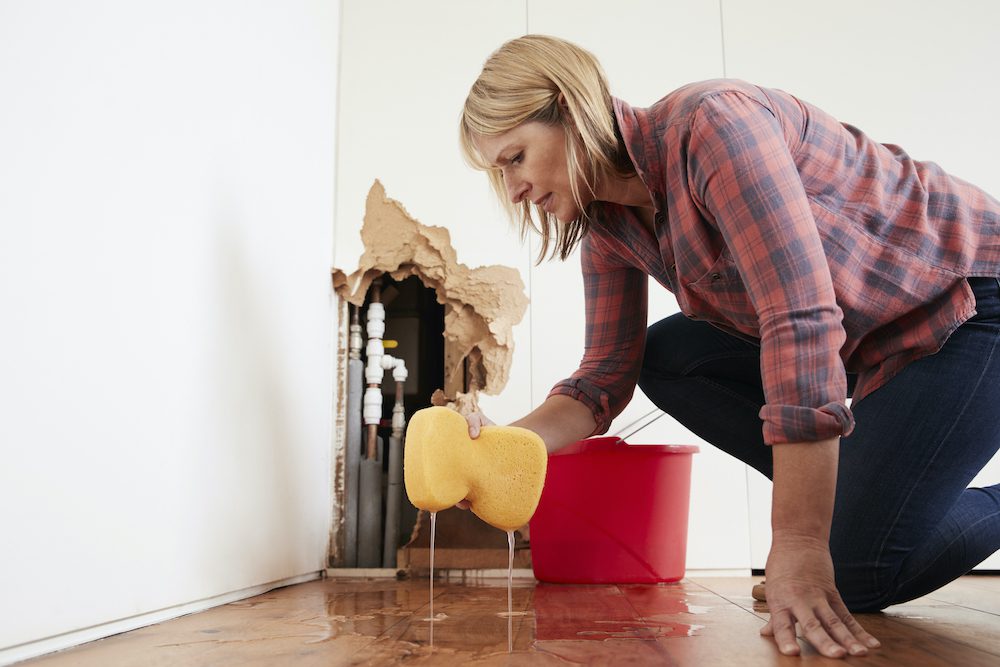How to Inspect If Your Residence Has a Concealed Leakage
How to Inspect If Your Residence Has a Concealed Leakage
Blog Article
The article which follows pertaining to Locating water leaks is relatively stimulating. Don't bypass it.

The moment you find a leakage, calling your plumber for repair work is the best option. Some small water leaks may not be visible. If you can not spot it with your nude eyes, below are some hacks that assist.
Early discovery of dripping water lines can reduce a prospective catastrophe. Besides saving you cash, it will lessen the worry as well as disappointment.
Inspect Water Intake
If you find unexpected adjustments, in spite of your consumption being the exact same, it suggests that you have leaks in your plumbing system. An unexpected spike in your bill shows a fast-moving leakage.
At the same time, a consistent rise each month, despite having the exact same habits, shows you have a slow leak that's likewise gradually escalating. Call a plumber to completely examine your residential or commercial property, especially if you feel a cozy location on your floor with piping beneath.
Evaluate the scenario as well as inspect
House owners must make it a practice to examine under the sink counters and even inside cabinets for any bad odor or mold and mildew development. These two warnings show a leakage so timely focus is needed. Doing regular inspections, even bi-annually, can save you from a major trouble.
Analyze the Water Meter
Checking it is a surefire method that helps you discover leakages. If it relocates, that suggests a fast-moving leak. This suggests you might have a sluggish leakage that could also be below ground.
Asses Exterior Lines
Do not neglect to check your outdoor water lines too. Should water seep out of the connection, you have a loose rubber gasket. One little leak can throw away lots of water and also spike your water costs.
Do a Food Coloring Test
When it involves water consumption, 30% originates from toilets. Test to see if they are running properly. Drop specks of food shade in the container and wait 10 mins. If the color somehow infiltrates your dish during that time without flushing, there's a leak between the storage tank and also dish.
Examine for discolorations as well as compromising as many pipes and appliances have a life expectations. If you think dripping water lines in your plumbing system, do not wait for it to rise.
The moment you locate a leak, calling your plumber for repair services is the finest service. Some little water leakages may not be noticeable. Checking it is a guaranteed method that assists you discover leaks. One small leak can throw away heaps of water as well as increase your water bill.
If you suspect dripping water lines in your plumbing system, do not wait for it to escalate.
The Dangers of Undetected Water Leaks
Mold
One of the most common results of undetected water leaks in your home is mold. Under the right conditions, mold can begin to grow and spread in just a day or two.
Moisture from water leaks combined with humidity and lack of ventilation allow mold spores to germinate and start spreading.
And while household mold doesn’t carry the same health risks as substances like asbestos, they can cause allergic reactions in people sensitive to them or with asthma.
Structural Damage
When water leaks occur in places we can’t see — above the ceiling, behind walls or beneath floors — they often have time to do some serious damage before making themselves known.
You might notice cracks or bubbles appear in your walls or a slow drip or water from the ceiling.
These are signs of water leaks and buildups in the structure of your home. If you don’t jump on these problems soon enough, the wood frame that supports your house could start rotting, leading to costly repairs and increasing the risk of disasters like ceiling or wall collapses.
Water Waste
According to the Alliance for Water Efficiency, the average home can lose anywhere from 2,000 to 20,000 gallons of water per year due to leaks.
High numbers like that might make you imagine a burst pipe spewing out water. But believe it or not, even a small, constant drip from a kitchen sink could add up to over a thousand gallons of wasted water in a single year.
And if you live in a place where you pay for every gallon of water you use, that adds up to a lot of dollars down the drain. So we understand leaks are bad. Let’s take a look at some of the common (and not-so- common) water leaks you might find around your home.
Flush Valve Flapper
The flush valve flapper is a rubber flap that sits above the flush valve at the bottom of the tank. It’s attached to the flusher with a chain. Over time, it can get worn out and lose its seal, causing an endless flow of water into the toilet bowl.
These leaks are hard to detect since they’re usually silent, but there’s a little insider trick you can use with just a little dye or food coloring:
Put a few drops in the toilet tank. Check the water in your toilet bowl 15 minutes later. If any of the color made it into the toilet bowl, you’ll know what the culprit is.
Fill Valve
The fill valve is what replenishes your toilet’s tank water after you flush. If you’ve ever looked inside your toilet tank and seen water gushing out of an upright plastic valve, that’s a faulty fill valve.
https://meetflo.com/blogs/flo/how-to-find-and-repair-water-leaks-a-comprehensive-guide

Hopefully you enjoyed reading our piece about Leaking water lines. Thanks a ton for taking the time to read through our piece of content. Do you know about another individual who is serious about the niche? Take a moment to share it. Thanks for your time. Kindly check our website back soon.
Report this page